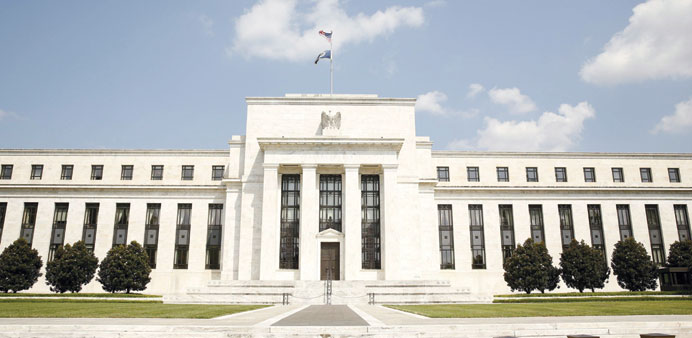The Federal Reserve building in Washington. With markets having swung in just a few weeks from pricing out a Fed interest rate hike next month to a strong likelihood it will take place, however, economic releases in the coming week may be judged simply as supporting evidence.
Reuters
London
A cloud of pessimism may have burned off for many investors on a bright October US jobs report, but much of the global economy – including China, which not long ago was a top worry for the US Federal Reserve – remains vulnerable.
With markets having swung in just a few weeks from pricing out a Fed interest rate hike next month to a strong likelihood it will take place, however, economic releases in the coming week may be judged simply as supporting evidence.
The US jobs report not only revealed more hiring than even the most optimistic of 101 forecasters polled by Reuters, but the unemployment rate fell to 5.0% and average pay growth accelerated to a solid 2.5% annual pace.
That pushed the dollar sharply higher against the euro on optimism the US economy may be stirring out of a fitful, uneven expansion into something more vigorous.
Analysts and Fed officials had mused beforehand about how to clearly explain that a slowing labour market is still capable of generating inflation, but that obstacle to a putative December rate hike has now been substantially removed. For most Fed officials who have commented, average monthly payroll growth of more than 180,000 since August is more than enough for them to be satisfied the job market is tightening at a strong enough pace.
Such optimism has its consequences, mainly a stronger US dollar, which itself has kept a lid on growth, particularly among manufacturers who are more vulnerable to rising prices on a competitive international market.
That dollar strength also has wreaked havoc on emerging markets, sending freely floating currencies plummeting, and even forcing China to modestly devalue the yuan.
While China’s reported growth rate has barely slowed, other data suggest its central bank has been right to cut interest rates six times in a year, with more stimulus seen in the pipeline.
“While the Chinese slowdown is going to take the edge off some of the growth figures in the major industrialized nations, so long as it’s not an outright collapse, the growth picture remains intact - that is to say, modest,” said Peter Dixon, global financial economist at Commerzbank.
Declines in both exports and imports are expected to be less pronounced than a month before in Chinese trade data due on Sunday and industrial output is forecast in a Reuters poll to have expanded at a slightly faster pace in October.
Investment is forecast to have weakened to the lowest in many years in October with a cooling in bank lending. Inflation is expected to slow to just 1.5%, extremely weak for a developing economy with such a high reported growth rate.
Commerzbank’s Dixon noted that other emerging markets will be hurt not only by further dollar strength.
“Commodity producers are also suffering from the China effect. The likes of Brazil for example, which endured a particularly tough 2015, is going to continue to suffer throughout the early part of 2016,” he said.
Growth data for the eurozone due on Friday are expected to be decent, but not spectacular. Economists polled by Reuters expected quarter-on-quarter growth of 0.4% for the July-September period, steady on the prior quarter.
But growth in Germany, Europe’s biggest economy, probably slowed to 0.3% last quarter from 0.4% in April-June, and it is far from clear whether that momentum can be sustained or speeded up in the current quarter.
One debate opening up for the European Central Bank is whether or not it should have been so heavy-handed at its recent news conference flagging further stimulus ahead, especially now that the euro has fallen significantly on Fed rate expectations.
At the last meeting, ECB President Mario Draghi made it clear the central bank was seriously considering not only an expansion of its bond purchase programme but possibly another cut to an already-negative deposit rate.
There will be plenty of comments from ECB officials next week, including from Bundesbank head Jens Weidmann, who is likely to express opposition to more stimulus.
For the US, the jobs report set the tone and data due on retail sales later in the week are not likely to do anything to alter those expectations.
A welter of Fed officials are due to speak later in the week, however, which could give more confidence on the prospects for a rate rise next month, especially given how the rhetoric had already swung in that direction.
Since the Fed took a pass at its September meeting, Reuters polls of economists have consistently showed expectations for a December rise in borrowing costs, although with weak conviction.



